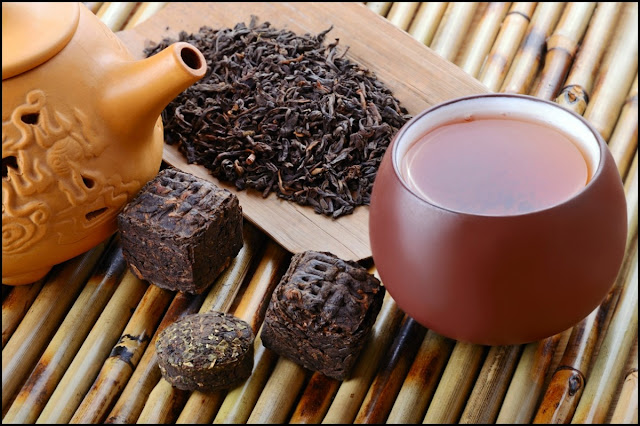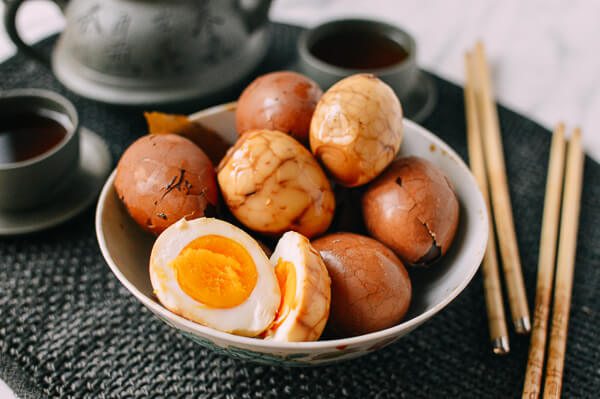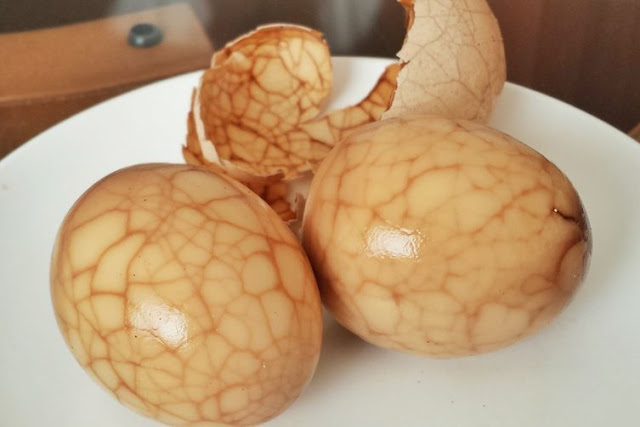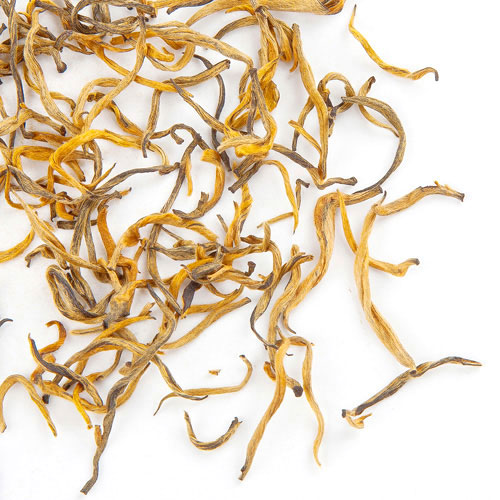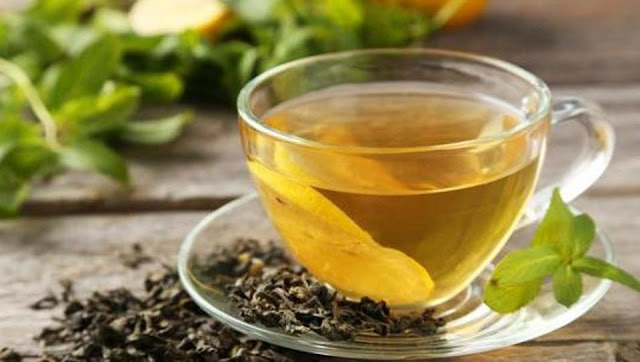Chinese Tea Health Benefits
While traditional Chinese medicine has long held that tea has many health benefits, modern research has begun to prove that many Chinese teas can be highly effective for boosting your immune system, aiding digestion and helping weight loss, among other benefits. While information on tea health benefits has previously been scattered and unreliable, this article will give you an overview of the full range of Chinese tea health benefits, and tell you which teas can best help you live a more healthy and happy life.
Tea for Digestion
Have you been noticing that coffee or carbonated energy drinks aggravate your stomach, giving you heartburn or indigestion? If so, tea can be a very useful replacement, giving you the caffeine you need to get your day started without the side effects. In fact, I can personally attest to this. As someone who suffers from acid reflux and a fairly severe caffeine addiction, I have drastically reduced my own discomfort and heart burn by cutting coffee out of my diet, and often drink over five cups of Chinese tea a day without any discomfort.
While black tea, green tea, pu-erh and herbal teas all claim to aid in digestion, the most important thing to look for is not the specific type of tea, but rather how it is produced. The main thing to look for is that the tea has been “post-fermented.” These teas typically start life as green teas or oolongs, but then go through a period of open-air aging which oxidates and ferments the tea, mellowing it out. Not only are these teas less harsh on the stomach, the enzymes and microflora which develop in the post-fermentation process can actually aid in digestion, making these teas ideal for drinking after a heavy meal.
The most common post-fermented tea is Pu-erh. When buying a puer for aiding digestion, make sure to buy a shou, or “ripened,” variety, as the sheng, or “raw,” variety has not gone through this process, and can actually be quite harsh on the stomach.
Tea for Weight Loss
There are currently many weight loss teas on the market, and you may have been wondering whether or not they are legitimate. While many of these products may exaggerate the weight loss benefits of tea, there have actually been a wide range of studies showing that Chinese tea, especially green tea, has a positive effect on metabolic rate and cholesterol levels.
If you want to buy a tea for weight loss, you don’t really need to spend extra money on proprietary blends. Most types of Chinese green tea–such as Pi Lo Chun, Mao Jian and Gunpowder Green–contain all of the compounds favorable to weight loss, and, when combined with exercise and a good diet, will expedite weight loss.
Tea for your Immune System
Chinese teas have a long history of being used to ward off disease and boost peoples’ immune systems. Recently, modern science has confirmed what people have suspected for thousands of years: most Chinese teas are beneficial to your immune system. This is because tea contains Theanine, an amino acid which has been shown to help immune response by increasing the disease-fighting capabilities of the body’s T Cells, a type of white blood cell. In fact, in a study comparing tea drinkers to coffee drinkers, the tea drinkers’ production of antibacterial proteins was found to be up to five times higher than that of the coffee drinkers’!
Almost all Chinese teas contain Theanine, but there are a few things to keep in mind. For starters, most herbal teas do not contain this compound, and their health benefits may vary. Both green tea and black tea contain Theanine, meaning that you can drink your favorite tea and do right by your body at the same time!
Clearly, switching from coffee to tea, or just expanding your tea-drinking horizons to encompass the dizzying variety of Chinese teas can be very beneficial to your health! In addition, Chinese tea has a number of other helpful compounds which researches are very optimistic about, which could assist in diabetes prevention, mood elevation and fighting bad breath. We will cover these other Chinese tea benefits, and recommend the best teas to realize them, in a later article.
Brewing Black Tea
Brewing Black Tea
Like other high-quality Chinese teas, a good loose leaf black tea requires some special brewing techniques.
While teapots or in-cup strainers can be used, the best way to fully enjoy a good tea is by brewing with a gaiwan or yixing pot. Use about one teaspoon of tea per cup of water, although you can use more or less to taste. Boiling water should always be used to brew black tea (as opposed to green tea and oolongs, which require cooler water).
Most in the West are used to letting a tea steep for 3-5 minutes before drinking. While this can be done, there is a more subtle and effective brewing method, which will allow you to enjoy multiple steepings, drawing out a range of different flavor profiles from your tea:
Scoop up about 1 tsp. of tea and add to your brewing vessel (assuming you are using a small pot or gaiwan, if your teapot is larger–over 1 cup or so–use a bit more).
Bring water to a full boil, and immediately pour in enough to fill the brewing vessel.
Pour this water off, but do not drink it. This first steeping is known as “washing”, and serves to remove an potential contaminants from the surface of the tea, as well as to bring out its aroma and flavor for future steepings
Reboil the water, and fill the brewing vessel. Wait a few seconds and then remove the strainer, or, if using a gaiwan or yixing pot, pour the contents into another pot. Serve the tea from this pot.
Repeat this process until the tea loses its flavor. Depending on its quality, black teas can be steeped up to 10 times, although most will begin to lose their flavor after 3-7 steepings.
The 4 Most Common Tea Brewing Mistakes
For such a basic beverage, the methods for brewing tea can be remarkably complex and intimidating for the uninitiated. If your brew isn’t tasting as good as you expect it to, you may be making one or two simple and easily remedied mistakes. This article will run down the most common mistakes that people make when brewing tea, and hopefully help you brew the perfect cup! Using Water That Is Too Hot
Americans are generally used to drinking bagged black tea which is steeped in boiling water. However, many teas are too delicate to be brewed at such high temperatures, and often require water that is well below the boiling point. This is most common with Green Tea, although many Wulongs and even some black teas require a specific, lower temperature range to deliver the perfect flavor.
The most common sign that the water you are using is too hot is that your tea will come out bitter or astringent. If this happens even with a short brew time, you should experiment with lower water temperatures when brewing.
Check out our article on water temperature to see what temperature is right for your tea.
Using Too Much/Too Little Tea
The fact that loose tea is not specifically portioned out can be intimidating to some. Furthermore, loose teas vary in their surface area and weight per volume, adding further complexity to this issue.
Generally speaking, however, one should use about one spoonful (with a teaspoon) of tea for an 8 oz cup. This doesn’t scale linearly, so, for example, you may only require three spoonfuls for a four cup teapot. Again, it would be helpful to experiment with different amounts of tea so you can figure out what suits your taste.
Using the Wrong Hardware
There is a literal bevy of loose tea brewing hardware on the market, and it can be confusing to figure out which products are right for you.
There are a few simple rules which should be followed when selecting tea brewing devices. The first is that loose tea requires space to bloom and have water move over it when being brewed. Many products–especially tea balls and some of the smaller filters–are too restrictive and can result in a weak brew. The second is that you should be able to quickly and easily remove the tea from the water so that it will not over brew.
I have had good experiences with stainless steel and ceramic mug inserts when brewing individual cups of tea. I also like tea pots which have a filter installed at the point where the spout is attached to the pot. These allow the tea free reign while being steeped, and allow the tea to be poured off when it is done brewing. If you want to serve over a long period of time from a tea pot find one which has a large, removable filter.
You can check out our product reviews for tea brewing accessories which we have vetted and approved.
Steeping for Too Long
This is one of the most common mistakes that people make when brewing tea. While many tea bags are packaged with instructions to brew for up to five minutes, this amount of time can make more delicate teas brew up bitter.
When brewing with loose leaf tea, make your first steeping last only a few seconds, and do not drink it. This “washing” steeping will open up the tea, making subsequent brews quicker.
There are no hard and fast rules for brewing time. We would recommend experimentation: note the flavor differences when brewing for, say, 15 seconds, 30 seconds and a minute. However, if you are steeping multiple times, later steepings should be longer than the first few.
Chinese Tea Egg: Information and Recipe
Walk around many Chinese cities in the morning and you’re sure to see a crockpot or kettle full of brown liquid and discolored, slightly cracked eggs. Completely unfamiliar to the western palette, the tea egg is a surprisingly delicious savory treat prized by millions, mostly in northern China. They are also quite popular in Hong Kong and Taiwan, although the recipes vary somewhat between regions.
Check out this article for information about tea eggs and their history, and skip to the end for a special Chinese Tea Info recipe!
Overview
Although this snack gets its name from the cheap, high tannin tea leaves used in the recipe, tea is far from their only or even main flavor. In addition to tea, the recipe usually calls for a wide range of other spices and flavors, often including soy sauce, five-spice powder and sichuan peppercorns (famous for their “ma la” or “numbing spicy” flavor).
They are often eaten as a quick breakfast snack in China along with porridge, fried buns or baozi. Although they are most popular in the morning, it’s not uncommon to see them sold at night at 24 hour convenience stores and eateries.
Tea eggs being cooked in China
Tea Egg Nutritional Facts and Safety
Tea eggs are about as healthy (or unhealthy) as a regular hard boiled egg. However, because of the soy sauce in the recipe, they can be quite salty, so it’s not recommended to eat too many of them in one sitting.
Food safety is another concern for those who aren’t familiar with tea eggs. Although most recipes call for them to be left to sit for up to several days, often at seemingly unsafe temperatures, the salt and spice content of the tea liquid has something of a preserving effect, which makes them quite safe to eat.
Tea Egg Recipe!
Here is a quick and easy recipe for making tea eggs in your own home. These are perfect for a quick snack, a simple breakfast or as a conversation starting party appetizer!
You will need the following ingredients:
6-10 Eggs
1 Teaspoon salt
3 Cups of water
4 Tablespoons soy sauce
2 Tablespoons black tea leaves (preferably something cheap and very dark. I would recommend a basic Keemun, or even some Indian black teas such as darjeeling. Loose leaf english or irish breakfast blends also work well. You can substitute 2 tea bags for this if you don’t have loose tea)
1 Tablespoon 5-spice mix
1 Teaspoon sugar
1 Teaspoon sichaun peppercorn (this can be somewhat hard to find, so if you can’t find it you can either skip this or add a pinch of cayenne)
Hard boil the eggs. Leaving the water in the pot, remove the eggs and shock them in cold water to stop the cooking process. Once cool, gently tap around each egg with the back of a spoon to create cracks in the shell. Do not peel the eggs, and try to leave the shell intact (not falling off).
Return the water to a boil, and add the remaining ingredients. Reduce to a simmer, and add the cracked eggs. Steep covered for about a half hour, then transfer to the refrigerator.
Wait for 12 hours or overnight before eating. The eggs can be kept (in the liquid) for a few days.
Tea Spotlight Dian Hong
Grown in Yunnan province, this tea is fermented with lychee, rose and longan (a sweet fruit native to Southeast Asia). What results is a tea that is remarkably beautiful both in sight and color. The unique fermentation process results in its famous “golden tips,” which immediately set this black tea apart from its darker brothers and sisters.
The taste is the other remarkable thing about this tea. I’ve been sipping some dian hong and wracking my brain for adjectives for almost a half hour now, and all I can come up with is…round. This tea fills every nook and cranny of your mouth and nose with delicate yet powerful flavor which is best described as mildly sweet.
I’m still working my way through a stash that I bought from my favorite tea seller in Beijing, so I can’t give too much expertise on buying this in America. The type I have is classified as “Yunnan Pure Gold,: and it would be pretty embarrassing to admit how much I paid for it. Suffice to say, if you’re looking for a quality dian hong, look for tightly rolled, unbroken leaves which uniformly exhibit a golden color throughout and possess a strong aroma. This tea also takes milk extremely well. Many tea retailers in China told me that it is the preferred tea for making Chinese or Tibetan versions of milk tea. I’ll be looking up some good recipes for this on Baidu later and posting a few when I get the time.
Health benefits
Oolong tea has always been seen as a compromise between the grassy green tea and the strong aromatic black tea. It comes at no surprise that the health benefits of Oolong are also a compromise between the two better known teas. Of course the blue tea also comes with its own unique effects on health.
Oolong tea is best known for its weight loss properties. Other benefits are stronger immune system, improvement of skin conditions and stronger teeth.
Weight loss
Many studies show that Oolong tea contributes to weight loss by accelerating metabolism and fat burn by approx. 15%. Additionally the studies showed that Oolong tea ingested 15 minutes before meals can regulate the level of insuline contributing to lower absobtion of carbohydrates. This has also a beneficial effect in on type 2 diabetes patients.
Skin condition
That’s where the all powerful antioxidants come into play. Most of the skin conditions acuired with aging like dark spots are the result of oxidized lipids. The lipids are special fats that contribute to the softnes, elasticity and young look of the skin. The lipids are oxidized by free radicals present in the blood as toxins or as a consequence of frequent sun exposure. The antioxidants in Oolong tea help keep the oxidation process in check giving the skin its young healthy look back.
Immune system boost
The antioxidants also help in keeping us healthy. Destroying the free radicals accumulated in the body with toxins, stress and metabolism before they can cause trouble in the body. Tests have shown a reduced risk of infections in individuals consuming Oolong tea.
Teeth health
The unique composition of Oolong tea helps keep the teeth healthy. Its antibacterial substances help to reduce bacterial plaque build on the teeth and gums. Additionally the minerals calcium and fluoride present in Oolong tea are the two main ingreedients from which the teeth are made. Oolong can be a rich source of those elements.
Downsides
Every medicine comes with its downsides. Even Oolong tea. The amount of caffeine in Oolong is higher than in green tea. Studies show that up to eight cups per day can be consumed without significant health risk. Another potential hazard of Oolong tea overconsumption its possible high content of fluoride. Fluoride is what makes our teeth storng but it is also one of the most poisonous substances in existence. The content of fluoride is higher in older leaves.
Oolong tea is best known for its weight loss properties. Other benefits are stronger immune system, improvement of skin conditions and stronger teeth.
Weight loss
Many studies show that Oolong tea contributes to weight loss by accelerating metabolism and fat burn by approx. 15%. Additionally the studies showed that Oolong tea ingested 15 minutes before meals can regulate the level of insuline contributing to lower absobtion of carbohydrates. This has also a beneficial effect in on type 2 diabetes patients.
Skin condition
That’s where the all powerful antioxidants come into play. Most of the skin conditions acuired with aging like dark spots are the result of oxidized lipids. The lipids are special fats that contribute to the softnes, elasticity and young look of the skin. The lipids are oxidized by free radicals present in the blood as toxins or as a consequence of frequent sun exposure. The antioxidants in Oolong tea help keep the oxidation process in check giving the skin its young healthy look back.
Immune system boost
The antioxidants also help in keeping us healthy. Destroying the free radicals accumulated in the body with toxins, stress and metabolism before they can cause trouble in the body. Tests have shown a reduced risk of infections in individuals consuming Oolong tea.
Teeth health
The unique composition of Oolong tea helps keep the teeth healthy. Its antibacterial substances help to reduce bacterial plaque build on the teeth and gums. Additionally the minerals calcium and fluoride present in Oolong tea are the two main ingreedients from which the teeth are made. Oolong can be a rich source of those elements.
Downsides
Every medicine comes with its downsides. Even Oolong tea. The amount of caffeine in Oolong is higher than in green tea. Studies show that up to eight cups per day can be consumed without significant health risk. Another potential hazard of Oolong tea overconsumption its possible high content of fluoride. Fluoride is what makes our teeth storng but it is also one of the most poisonous substances in existence. The content of fluoride is higher in older leaves.
Oolong tea 2019
Oolong tea one of the few pristine and traditional chinese teas. Often refered to as blue tea or dragon tea, Oolong tea is a semi oxidized product derived from the tea plant (camellia sinensis) giving it a unique aroma and composition. Several varieties are produced throughout southeast asia mainly in China (Wuju mountains, Fujian, Guangong) and Taiwan.
Health benefits
A unique tea with unique health benefits.
Oolong is best know for the weight loss properties. In addition of increasing metabolism and promoting fat burn at a higher rate Oolong tea can also block fat absorbtion in the intestines. Oolong has been used as a complement to classical treatment of type 2 diabetes.
Beneficial for the hearth and cardiovascular system in general as it reduces blood concentrations of triglycerides. Other studies have shown the decrease of cholesterol levels in regular consumers of Oolong tea.
A host of skin problems such as eczema can be cured with Oolong tea.
Oolong can also reduce and keep in check high blood pressure.
Oolong is the best of the three most consumed teas in preventing tooth decay.
Processing
After being picked the green leaves of tea are first dried in the sun to remove excess moisture. Then the leaves are cooled in a shaded area and gently bruised in preparation of the oxidation process. The leaves are then heated in an oven or large pan this is where the oxidation takes place. The leaves are then rolled in strands and heated at low temperature. This phase is crucial to the forming of the aroma of oolong tea.
Taste
Its taste is unique although closer to green tea than black tea. It lacks the grassy notes of the green and the rosy aroma of the black teas. In turn it is characterized by a bitter punch and a sweet fruity aftertaste.
Brewing
About two teaspoons of Oolong tea should be poored into 200ml of hot water (approx. 80°C). The tea should be steeped for around 3 minutes. Multiple brews are possible with high quality Oolong tea.
Oolong tea Origin of the name
The word oolong is a chinese word for black dragon and is pronounced O-liông. The other names as Wu Long, Wulong and Wu-long tea are only the different pronounciations of the chinese name and actually stand for one and the same, Oolong tea.
How Oolong tea got its name remains a secret and is a theme of quite a few myths, but there are three commonly accepted theories:
Tribute tea theory
According to this theory, Oolong tea was a direct descendant of Dragon-Phoenix Tea Cake tribute tea and replaced it when loose tea became popular. It was called the Black Dragon tea because it was dark, long and curly.
Wuyi theory
According to Wuyi theory, Oolong tea originated from the Wuyi Mountain. Supposedly Oolong tea was named after the part of Wuyi mountain where it was originally produced.
Anxi theory
According to this theory, oolong tea had its origin in the Anxi oolong tea plant, where it was discovered by a man named Sulong, Wulong or Wuliang.
Another explanation for the name is the fact that Oolong tea leaves resemble little black dragons but probably the most interesting guess are the variations of the tale about a man called Wu Liang. The tales say that Wu Liang had a hard, labourous day of tea-picking behind him when something distracted him. Some tales say it was a deer, some speak of a snake, resembling a dragon. One or the other, one of those distracted or scared him away and after Wu Liang returned to his tea, it was already well oxidized in the sun. Out of curiosity, Wu Liang brewed the oxidized tea leaves and found the tea very pleasing.
How Oolong tea got its name remains a secret and is a theme of quite a few myths, but there are three commonly accepted theories:
Tribute tea theory
According to this theory, Oolong tea was a direct descendant of Dragon-Phoenix Tea Cake tribute tea and replaced it when loose tea became popular. It was called the Black Dragon tea because it was dark, long and curly.
Wuyi theory
According to Wuyi theory, Oolong tea originated from the Wuyi Mountain. Supposedly Oolong tea was named after the part of Wuyi mountain where it was originally produced.
Anxi theory
According to this theory, oolong tea had its origin in the Anxi oolong tea plant, where it was discovered by a man named Sulong, Wulong or Wuliang.
Another explanation for the name is the fact that Oolong tea leaves resemble little black dragons but probably the most interesting guess are the variations of the tale about a man called Wu Liang. The tales say that Wu Liang had a hard, labourous day of tea-picking behind him when something distracted him. Some tales say it was a deer, some speak of a snake, resembling a dragon. One or the other, one of those distracted or scared him away and after Wu Liang returned to his tea, it was already well oxidized in the sun. Out of curiosity, Wu Liang brewed the oxidized tea leaves and found the tea very pleasing.
Oolong Tea for Weight Loss
Oolong tea is known to have numerous health benefits. It is not only renowned for its taste but also for its ability to boost our overall health. But for people who like to keep in shape, one of the most positive effects of Oolong is the effect it has on the waist line. It can provide excellent support to a weight loss program, especially those involving cutting out carbohydrates from the diet.
Oolong tea diet is best in combination with a carb controlled (not carb eliminating) diet and it also provides more long term and lasting positive health benefits on top of the immediate benefits of weight loss. With reducing your fat deposits permanently and giving you more energy, this Oolong tea carb-controlled diet is likely to lead to a reduced risk of heart disease and type II diabetes.
Oolong tea will also provide your body with antioxidants which can prevent or undo the damage done by free-radicals. Furthermore, by removing free radicals from your bloodstream, Oolong tea can boost your skin health, immune system operation, and metabolic rate.
Ofcourse, a big part of a healthy weight loss diet are exercise, enough sleep and healthy eating habits. If you include Oolong tea in your diet plan, it promises to bring faster and more visible results.
Subscribe to:
Posts (Atom)
Popular
-
An Introduction to the Types of Tea Processing A lot of people tend to believe that different kinds of tea are taken from different kinds ...
-
Green Tea Side Effects Does the all natural blend of green tea have any side effects? Get the facts straight as the fog is lifted in our ...
-
What Is a Loose Oolong Tea? Loose Oolong Tea comes from Camellia Sinensis. It is processed as loose semi-fermented loose tea. It has two...

